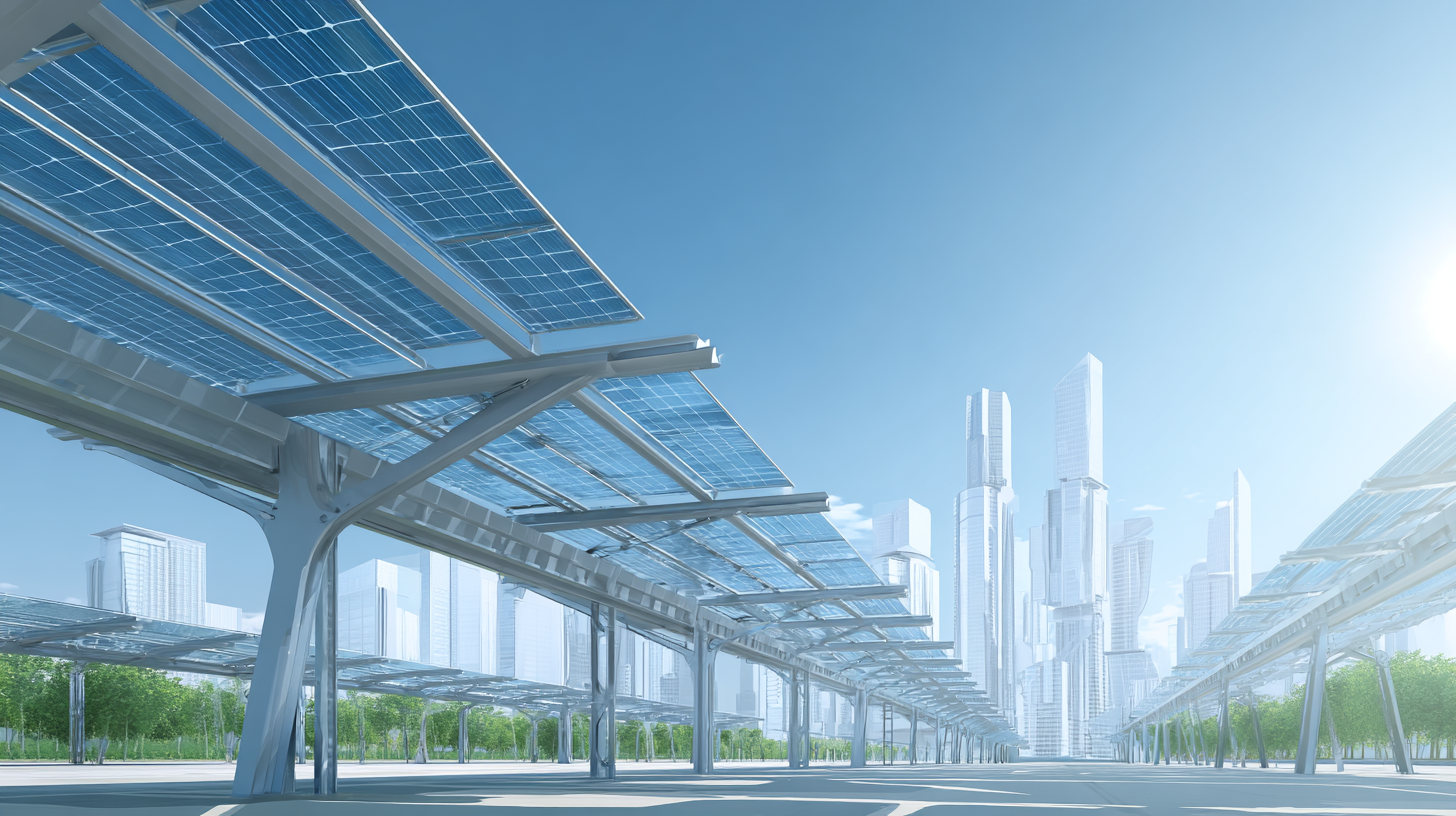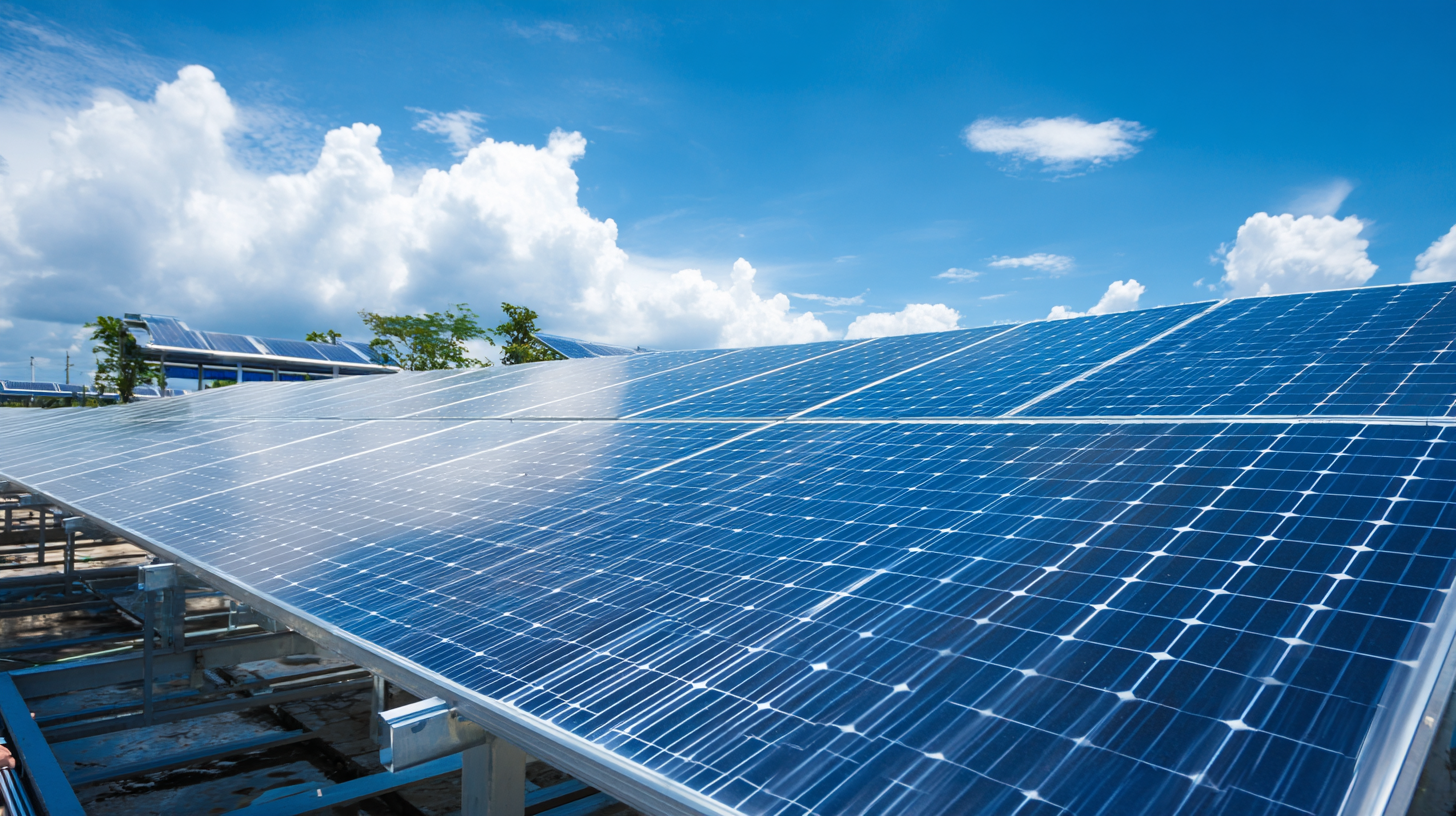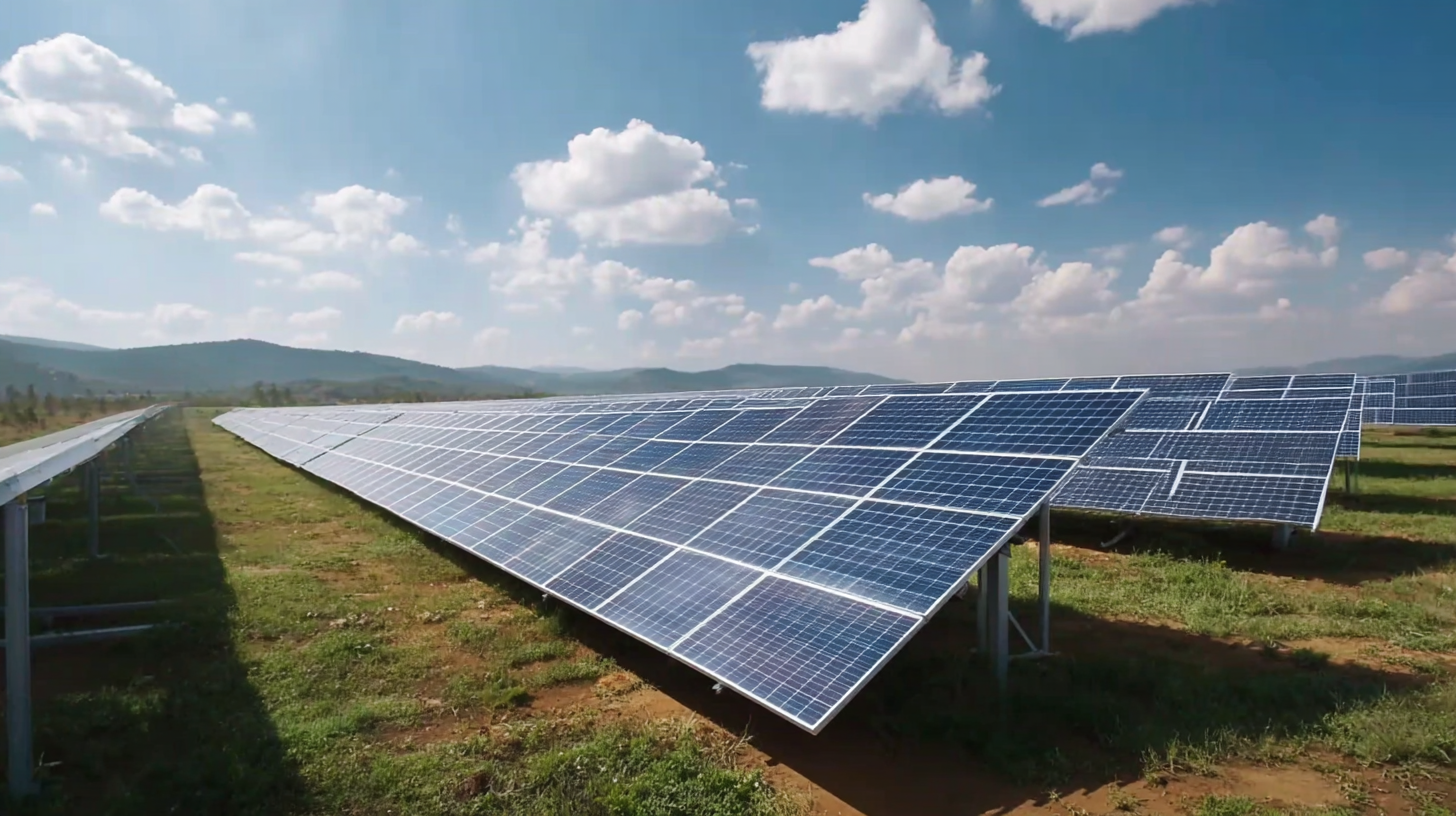2025 Market Insights: The Future of Best Solar Panels Systems in a Sustainable Energy Landscape
As we look toward 2025, the solar energy landscape is poised for significant transformation, underscoring the critical role of solar panel systems in achieving a sustainable future. The International Energy Agency (IEA) projects that solar energy could account for 20% of the world's electricity supply by 2040, making solar panel systems pivotal to global energy strategies. Furthermore, a recent report from Bloomberg New Energy Finance highlights that the cost of solar PV technology has dropped by over 80% since 2010, spurring adoption and innovation across residential and commercial sectors. This ultimate guide will explore the latest market insights, emerging trends, and the best solar panel systems available as we navigate this evolving landscape, showcasing how these technologies contribute to a greener future while meeting the increasing energy demands of a growing population.

Current Trends in Solar Panel Technologies Heading into 2025
As we approach 2025, the solar panel industry is witnessing rapid advancements driven by the demand for more efficient and environmentally friendly energy solutions. One of the most significant trends is the development of bifacial solar panels, which capture sunlight from both sides, enhancing energy production and increasing overall efficiency. This technology not only maximizes the use of space but also provides a compelling return on investment for both residential and commercial applications.
Additionally, the integration of smart technologies into solar panel systems is transforming how energy is monitored and managed. With the rise of IoT devices, homeowners can now track energy usage in real-time and optimize their consumption patterns. This shift towards smart solar solutions is complemented by the increasing adoption of energy storage systems, such as advanced battery technologies, which allow users to store excess energy generated during the day for use during peak hours or nighttime. As these trends continue to evolve, they are shaping a more sustainable energy landscape that prioritizes efficiency and user empowerment.
2025 Market Insights: Future of Best Solar Panel Systems
Key Factors Driving the Adoption of Solar Energy Systems
The transition towards solar energy systems has been significantly influenced by several key factors driving their widespread adoption. One of the foremost elements is the decreasing cost of solar technologies, which has made solar panels more accessible to consumers and businesses alike. Innovations in manufacturing processes and economies of scale have led to dramatic reductions in prices, allowing more people to invest in solar without significant financial barriers.
Alongside cost reduction, governmental policies and incentives play a crucial role in promoting solar energy systems. Many countries have introduced favorable tax credits, rebates, and feed-in tariffs to encourage the shift from fossil fuels to renewable energy sources. These initiatives not only boost consumer interest but also foster a competitive market that accelerates technological advancements in solar energy.
Additionally, the growing awareness of climate change and environmental degradation has heightened public demand for sustainable energy solutions. As more individuals and organizations recognize the urgency of reducing carbon footprints, solar energy emerges as a viable option. This conscientious shift towards sustainability is not just a trend; it's transforming the energy landscape, ensuring that solar systems will remain a critical element of future energy strategies.
Comparative Analysis of Leading Solar Panel Brands for 2025
As the world moves towards a more sustainable energy future, choosing the right solar panel brand becomes crucial for homeowners and businesses alike. In 2025, leading solar panel brands will be pivotal in shaping energy consumption patterns. According to the latest industry reports, the global solar panel market is projected to reach $223 billion by 2025, with a compound annual growth rate (CAGR) of over 20% from 2020. Major players such as SunPower, LG, and Canadian Solar are expected to dominate, offering advanced technologies like PERC (Passivated Emitter and Rear Cell) and bifacial modules that enhance efficiency and performance.

When considering solar panels, it’s essential to compare efficiency ratings and warranties. For instance, SunPower's Maxeon panels boast an impressive 22.8% efficiency, making them a top choice for maximizing energy output. Furthermore, a solid warranty is a key factor; brands that offer 25-year product and performance warranties provide peace of mind and long-term value.
Tips: Always check for the panel's efficiency and warranty terms to ensure you make a sound investment. Additionally, consider the local climate and energy needs when choosing the right system for your property. Understanding the energy yield in your area can help you predict long-term savings effectively.
The Role of Government Policies in Shaping the Solar Energy Market
In the evolving landscape of solar energy, government policies play a pivotal role in shaping market dynamics and facilitating the transition towards sustainable energy solutions. As noted, the global solar generator market is projected to see substantial growth from $6.32 billion in 2025 to $10.18 billion by 2032. This growth is not only a reflection of technological advancements and increased consumer interest but also heavily influenced by regulatory frameworks.
Countries like India and the Philippines are at the forefront of energy reform efforts, implementing comprehensive regulatory strategies that aim to enhance the resilience and efficiency of their power grids while promoting renewable energy adoption.
Furthermore, the commitment of various governments to establish and refine renewable energy incentive programs is crucial. These initiatives are designed to attract investment, streamline processes for energy generation, and provide financial support for solar technologies, thereby accelerating the growth of the sector. For instance, Australia’s recent investment of $1.5 billion to bolster renewable energy development underscores the proactive measures some nations are taking to reduce dependence on foreign suppliers and promote local industries. As global consensus on achieving net-zero emissions continues to strengthen, the interplay between government policies and market trends will be essential in fostering a sustainable energy future.
Future Innovations in Solar Panel Designs and Efficiency Improvements
The solar panel industry is on the brink of a significant evolution, driven by innovative designs and efficiency improvements that promise to reshape the sustainable energy landscape by 2025. According to a report by the International Renewable Energy Agency (IRENA), the average efficiency of solar panels has steadily increased from about 15% in 2010 to over 20% in 2023. This trend is expected to continue as manufacturers invest in advanced materials, such as bifacial solar cells and perovskite technology, which could potentially raise efficiency rates above 25% in the coming years.

Additionally, the integration of smart technology into solar panel systems is poised to enhance energy management and performance. Research from the National Renewable Energy Laboratory (NREL) indicates that incorporating IoT devices not only optimizes energy production but also significantly reduces maintenance costs. These innovations are designed to overcome traditional barriers, making solar energy a more viable option for consumers and businesses alike. With continuous advancements in design and efficiency, the future of solar panels looks promising, setting the stage for a robust, sustainable energy market in the near future.

